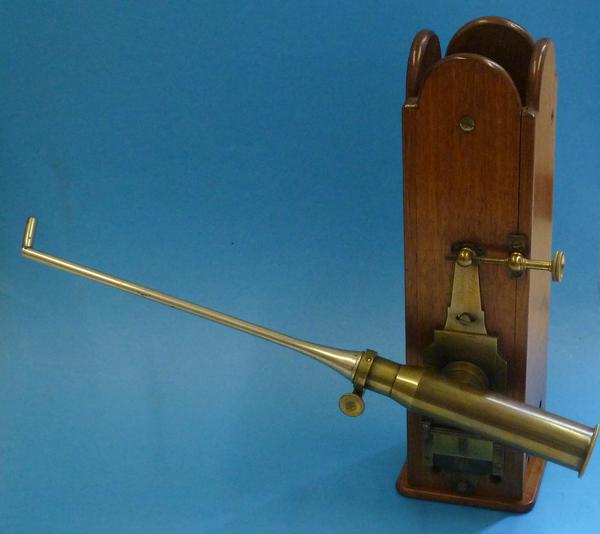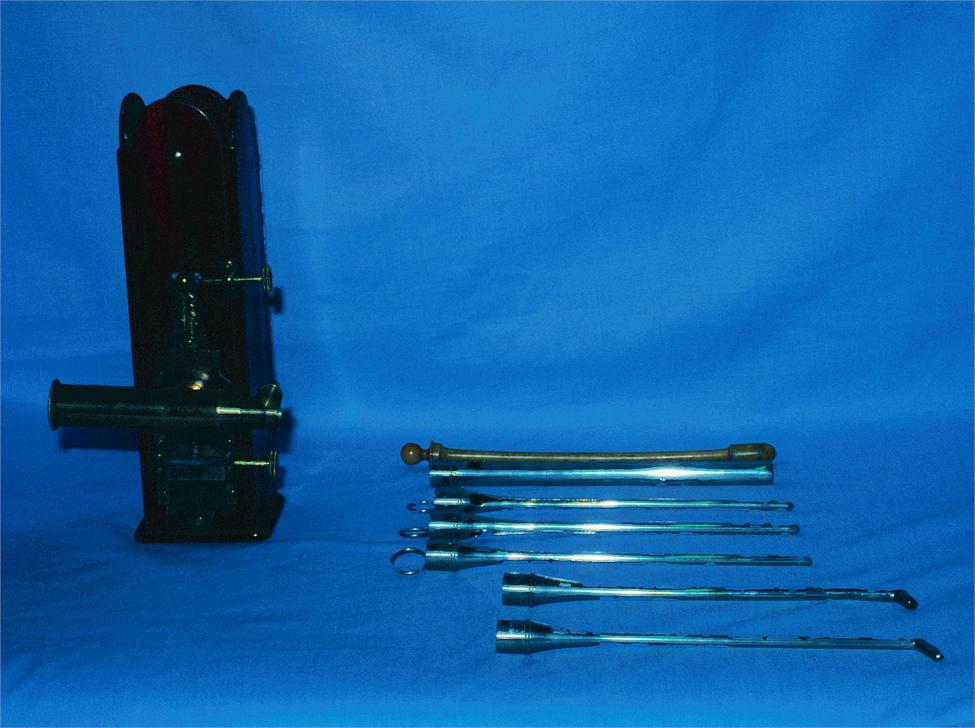Virtual Museum
Cystoscopes
First successful endoscopic treatments
In 1865, the Dublin urologist, Francis Richard Cruise introduced an improved version of Desmoreaux's endoscope.
These photographs were taken by Mr Geoff Willis in the 1970's. This Cruise Endoscope is still in the Museum of the Manchester Medical School. Cruise used a mixture of petroleum and a bit of dissolved camphor to replace Desormeaux’s gasoline mix. This gave a more powerful light, transmitted colours more accurately and generated a flatter flame that projected light better. This improved the illumination but the heat level did become somewhat problematic.
Cruise also altered the lens system using a binocular device by dividing his lens apparatus into two separate systems; one part was used as the reflecting module, while another concave lens was set up specifically to focus the light more intensely onto the field of view.
Cruise was considered the most successful endoscopist of his time performing some of the world’s first endoscopic treatments successfully in living patients. Cruise claimed to have been performed one of the world’s first endoscopically-assisted urethrotomies with full visualization.
Using his newly improved endoscope, Cruise could, for the first time, also diagnose diseases of the bladder such as tumours.
Click on any item to view an enlarged version (where available)
The Basic Endoscope

A recent photograph, courtesy of the Manchester Medical School
With Accessories

Courtesy of Geoff Willis and Manchester Medical School
Short Video about the Cruise Endoscope
← Back to Cystoscopes